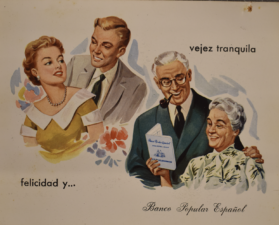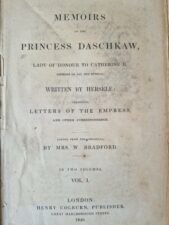The following interview has been made available to the WHN by Joe Starita and his publisher, St Martin’s Press, New York. It was prepared initially for the History News Network. WHN Admin.
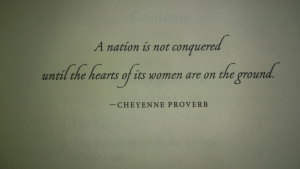
- Susan La Flesche is a fascinating figure and was a woman ahead of her time. What drew you to her as the subject of your new book, A Warrior of the People? (What contributions did she make to the advancement of her people? What makes her a worthy subject?)
The American West has long since become this mythical landscape – a landscape shaped by dime-store novels, mystical poems, romantic paintings, powerful photographs and an endless glut of Hollywood movies. And throughout its evolution, it has almost always been a landscape exclusively defined by men. We know about the American West through the eyes of Custer and Crazy Horse, George Crook and Geronimo, Buffalo Bill Cody and Red Cloud, Wild Bill Hickok and Sitting Bull.
So what I found particularly fascinating and attractive with Susan’s story was the opportunity to offer the reader a new perspective: What did the American West look like in the last quarter of the 19th century through the eyes of a woman – and not only a woman, but an American Indian woman. So this provides a unique viewpoint. It gives the reader the opportunity to see the great collision between Manifest Destiny and Native American culture not through warfare and reservation life – but through the eyes of a complex woman who managed to thread this very delicate bi-cultural needle, a woman who found a way to absorb the best of white influences without losing her Native soul. A woman who was equally comfortable at a Philadelphia poetry reading or an Omaha Indian pow-wow. There were very few women like that – then or now.
But no matter how many symphonies or poetry readings she attended, Susan never lost sight of her life-long desire to become a doctor and use those medical skills to help her people. More than a century ago, she realized her long-held dream of building a hospital to serve her people. In January 1913, she presided over the opening of the first modern hospital in Thurston County, Nebraska. Susan had raised all of the money herself and it was built without a penny of public tax dollars – a significant feat in any era. From the beginning, the hospital staff treated hundreds of both Native people and whites, saving many from tuberculosis and influenza, delivering babies and providing a wide range of medical services.
A century later, one of the biggest problems facing reservations today is the lack of role models. In early November, both this book and a companion PBS documentary on Susan – entitled Medicine Woman – will be released to a national audience. I hope that my book and the movie will elevate the profile of this remarkable woman so that more Native youth can be inspired by her example. There is now a young Winnebago girl attending Nursing College. She wants to get her degree and then return to her reservation to help her people. She knows all about Dr. Susan La Flesche. And I hope many others will soon.
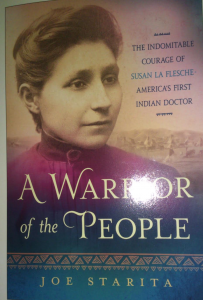
- What do you think readers will be most surprised to learn about La Flesche? What were you surprised to learn in your research?
I think many, many readers will be surprised by the same thing I was: How deeply entrenched gender bias was throughout the Victorian Era. How low the bar was set for women – white women, who were largely expected to do no more than raise children and maintain a safe, comfortable, happy, Christian home for the husband. So one can only imagine where that bar was set for an Indian woman.
Throughout the last half of the 19th century, there was a pervasive belief that women’s menstrual cycles made them unfit for intellectual pursuits. That women’s brains were smaller, so they had intellectual limitations. That women should never be allowed to attend college because the stress of university life would destroy their reproductive organs, thereby threatening the very existence of mankind. And these were not the beliefs of the knuckle-draggers. These theories on female limitations, purportedly grounded in scientific fact, came from the intellectual elite – from Harvard doctors, British biologists and philosophers whose theories on female limitations found their way into the leading scientific journals of the era.
When you realize the headwinds that Susan – an Indian woman – was bucking, it is all the more remarkable she was actually able to get into the only medical college in the world that accepted women at the time and that she graduated No. 1 in her class – 31 years before women could vote and 35 years before Indians could become citizens in their own country. It is also remarkable to have researched how that happened and to see how a small group of accomplished, determined East Coast women closed ranks around Susan and were not going to be denied: They were going to get her into medical school at all costs and they succeeded.
Another thing that emerged in the research, and something that also should interest readers, is the startling contrast between how “modern” America and “primitive” Native America viewed women throughout the Victorian Era. In traditional Native cultures, women often were seen as co-equals. They maintained and controlled the home, were consulted for important decisions, could unilaterally end a marriage and owned allotted land. In some tribal communities, a girl’s first menstrual cycle was cause for celebration – confirmation that she had become bound to Mother Earth. That stood in stark contrast to the widely held Victorian view: Men were put on earth to produce; women to reproduce.
Finally, it was astonishing to discover this simple fact: Marie Curie, the only woman every to win the Nobel Prize twice, desperately tried to cure the cancer killing Susan by sending her a radium pellet. But a white doctor accidentally dropped the pellet too deeply into Susan’s ear canal and it ended up accelerating her death.
- Why is it that we don’t already know more about America’s first Native American doctor?
Part of that answer is location. Susan lived and died in Northeast Nebraska, a remote, rural corner of the Central Great Plains – far removed from population centers and media hubs. By design, reservations often were carved out of remote, isolated areas where it was hoped the residents would eventually die off on society’s margins. So given the remoteness of the Omaha Reservation, the lack of media outlets, how long ago her story unfolded and the fact that she was a woman it is not terribly surprising she has largely remained below history’s radar. Hopefully, this book and the documentary can help elevate her profile.
Another part of the answer is that Susan came from a remarkable family, one in which her older siblings got far more attention. Her older sister, Susette, also known as Bright Eyes, was the translator for Ponca Chief Standing Bear in his landmark 1879 trial – a trial that established for the first time that Indians were henceforth to be regarded as a “person” within the law. Susette also was the first Indian woman to publicly stump for Indian citizenship rights and she did a good deal of brainstorming on the East Coast, where she became somewhat of a media darling. And Susan’s older half-brother, Francis, was the nation’s first Indian ethnographer – a man who often worked in Washington and became quite well known for his published works. So, in some ways, the baby of the family stayed somewhat in the shadows during her lifetime, never commanding the same kind of attention as some of the older ones.
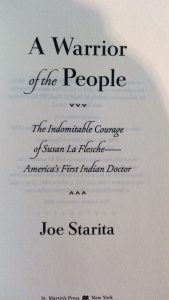
- Which other impactful figures in our history had ties to La Flesche?
There were a number of impactful figures in U.S. history who had ties to Susan La Flesche. They included:
■ Samuel Chapman Armstrong: A U.S. Army general in the Civil War, Armstrong founded the Hampton Normal and Agricultural Institute in 1868. His vision for the Virginia school, which he ran with military precision and discipline, was to transform former slaves, free blacks, Native Americans and their children into teachers, farmers, carpenters, blacksmiths, tailors, seamstresses and homemakers. The school’s most famous graduate was Booker T. Washington. Susan, who graduated No. 2 in her class, and her older sister, Marguerite, attended Hampton for two years – from 1884 to 1886.
■ John Neihardt: The Nebraska poet and writer, who achieved international fame with his book Black Elk Speaks, was a close friend of Susan’s, an ardent admirer and a neighbor when they both lived in Bancroft, Nebraska – a community just off the Omaha Reservation.
■ Alice Fletcher: Attached to Harvard University’s Peabody Museum, Fletcher became America’s first female anthropologist. She traveled extensively in the American West and spent a good deal of time on the Omaha Reservation, where she became close friends with the La Flesche family. In July 1883, she became desperately ill while studying Omaha cultural traditions and eventually was nursed back to health by 18-year-old Susan La Flesche. From that point on, Fletcher was a devoted ally of Susan’s, eventually helping her to get into Hampton and to the Woman’s Medical College of Pennsylvania.
■ Marie Curie: In the fall of 1915, when Susan was dying of cancer, her family contacted the two-time Nobel Prize-winner in Paris. Aware that her radium research might offer a potential cure for the disease, the family asked if Curie could provide any hope. Curie sent a radium pellet inside a steel-lined box to Susan’s home in Walthill, Nebraska. But a local doctor bungled placing it inside Susan’s ear canal and she died soon afterward.
- How has La Flesche’s contributions affected our present situation from a medical perspective, a cultural perspective, and/or a woman’s advancement perspective?
To date, La Flesche is well known in Nebraska. She soon will be a candidate for the Nebraska Hall of Fame and has long been a strong role model for youth on the Omaha and nearby Winnebago Reservation. But nationally, her inspirational story is not well known. To make a greater impact, it is necessary to first know her story. And it is hoped that this book and the PBS documentary will go a long way in introducing this remarkable American Indian woman to a much wider audience and that she will then begin to have a much greater impact on our culture.
- What do you hope readers will take away from this biography?
Susan La Flesche gave her life for her people. At all hours of the day and night, she criss-crossed the vast Omaha Reservation, in 20 below weather, in two feet of snow, leaving before dawn, arriving home long after dark, trying to save her dangerously ill people from tuberculosis, influenza, diphtheria, colds, fevers and the endless maladies wrought by the ever-present whiskey peddlers. She taught Sunday School, attended pow-wows, presided at burials, supported the Native American Church, railed in Congress against the federal theft of Omaha lands, organized quilting circles, crusaded against the common house fly and the communal drinking cup, hosted poetry readings and cultural seminars and raised two healthy sons. She built a desperately needed hospital without a penny of tax dollars and created a powerful role model where none had existed before.

In the end, La Flesche knew that the purpose of life is not to try to avoid pain and suffering – that it was hopeless to do so. The purpose of life, she believed, was to find a purpose and then find the courage and the inspiration to live out that purpose.
